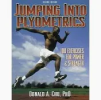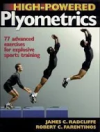f you are wanting to improve the ability to tense specific muscles, I still put my bets on trying to relax everything else and then trying to contract them. You won't be producing MVC or anything like that, but that wouldn't be the point.
MVC Acronym
If I might suggest, in posting information, using acronyms is find as long as you identify what they stand for and then define what it is.
Many individuals are not familiar with the acronym and not sure what is the benefit.
Research article use a lot of acronyms. However, it is defined in the article so for individual to comprehend and learn.
With that said let's bread it down...
MVC
This stands for Maximum Voluntary Contraction; pushing or pulling against something as hard as possible.
The benefit in an Isometric is that it innervates and maximally develop the Fast Twitch Muscle Fibers producing an increase in Strength; when performed correctly.
At some point in Isometric Training, a Maximum Voluntary Contraction need to be implement to optimally increase Strength.
As an example...
I try for MVC in the compound holds.
Maximum Strength Training and Development
Maximum Strength is developed with...
This approach is counterproductive for Maximum Strength Training...
I have to start simply with trying to hold any tension in the target muscle at all for 60-90 seconds.
Low Repetitions For Strength
Sets of Repetition of 1-5.
The Total amount of time in a Maximum Strength Set should be around 10 Second.
Once past that Number of Repetition and Time, the Fast Twitch Muscle Fiber are no longer being innervated nor trained.
Slow Twitch Endurance Muscle Fiber Development
To reiterate, Fast Twitch Muscle Fiber are optimally trained and developed with intense contraction of around 10 Seconds.
A 60-90 Second Contraction develops that Slow Twitch Muscle Fiber and it may innervate Hypertrophy Development. Thus, it works for this objective.
That because when a Muscle is contracted elicit essentially the same response as Occlusion Training. Venous Blood flow from the Muscles back to the heart is restricted producing "The Pump", which triggers Hypertrophy.
Secondly, no one can maintain a Maximum Voluntary Contraction much past 10 Seconds, let along 60 - 90 Seconds.
ID the point in a given movement...you can break it down. Find the point, and set up on a hold just beneath that point.
Sticking Point Training
From Post 19
I saw in the goals thread where @North Coast Miller said he had made some really good progress with Isometrics. Thought I'd share a style that I've started messing around with. I'll be putting them to the test over the next year. Hopefully someone may find this interesting or that I am...
www.strongfirst.com
Isometric Sticking Point Training Angle
An increase in Sticking Point Strength occurs when performing an Isometric 15 degrees, above and below it.
There will be some carry over below and above that 15 degree angle. However, not to the same extent as with the specific angle in which the Isometric is performed.
Thus, some increases in strength will be produced "Through the entire range" but it will be substantially less that in the specific 15 degree area.
Since the Sticking Point is the "Weakest Link" in the movement chain, focusing on increasing Limit Strength at the particular point is a good investment to ensuring more weight is driven up.
Where's The Sticking Point?
The Sticking Point isn't where the bar stop moving. The Sticking Point is earlier in the movement.
Car Analogy
The Sticking Point is like a car that runs out of gas. The car will keep rolling. So, where the car eventually stop, isn't where it ran out of gas.
The same applies with the Sticking Point in an exercise.
Thus, Sticking Point Training is optimally accomplished with Isometric Training at angles just below where the bar stopped moving and just above.
Explosive-Isometric Training From Post 6
Another factor in Overcoming a Sticking Point is Power.
The Sticking Point amount to trying to drive your car though a mudhole. Increasing the Speed/Power of your car driving through the mudhole maximizing your chances of getting through it.
The same applies to a Sticking Point. Increasing Power in conjunction with increasing Strength at your Sticking Point are key.
This hybrid Explosive-Isometric Method is effective...
I saw in the goals thread where @North Coast Miller said he had made some really good progress with Isometrics. Thought I'd share a style that I've started messing around with. I'll be putting them to the test over the next year. Hopefully someone may find this interesting or that I am...
www.strongfirst.com
Explosive-Isometrics
One method that I have found that allow the initial movement off the pins to be Explosive and then a few inches up elicits an Isometric is with bands.
The band are attached to the bar so that once they reach a few inches off the rack (Sticking Point Area), they provide so much resistance and that there is no bar movement with the right band tension and weight loading.
You end up performing an Isometric at that point.
The gradual loading/resistance of the bands as you drive the weight up, slow the bar down, just prior to reaching the Isometric Position.
Now let me add this...
No Band Loading Explosive-Isometrics
This method involves progressively increasing the Loading within the Power or Speed Training Percentages.
The bar sitting on lower pins (let's say a Rack Bench Press), then being rammed into the Top Pins (pins a few inches higher in the Rack)
The Issue
1) It not good for the bar nor the Rack Pins.
2) The noise is deafening.
3) The Whiplash Effect...
The sudden stop when slamming into the Upper Isometric Pin produces a somewhat Whiplash Effect that doesn't feel good.
With the Explosive-Isometric Bands is no Slamming Into a Pin a few inches higher in the rack.
The Law of Unintended Consequences
This means that decision and action often have unintended outcomes.
Banded Explosive-Isometric were something I discovered by screwing up, performing Accommodating Resistance Band Bench Press Training in a Power Rack.
I Attached Bands to a Load Bar for Power Bench Press Training.
The bar exploded off the Bottom Pins with the Lighter Speed and Moderate Power Training Percentage.
However, the Bands that I attached to the bar were so strong that I was unable to Lock The Weight Out.
it's like Viagra that was developed for Blood Pressure and is now used for improved set, Erectile Disfunction.



